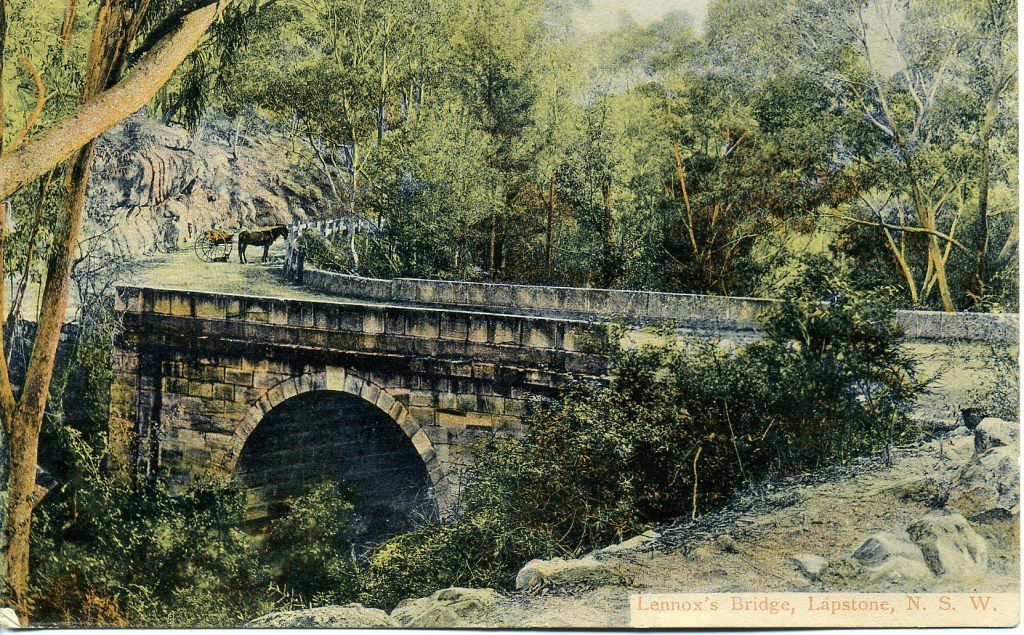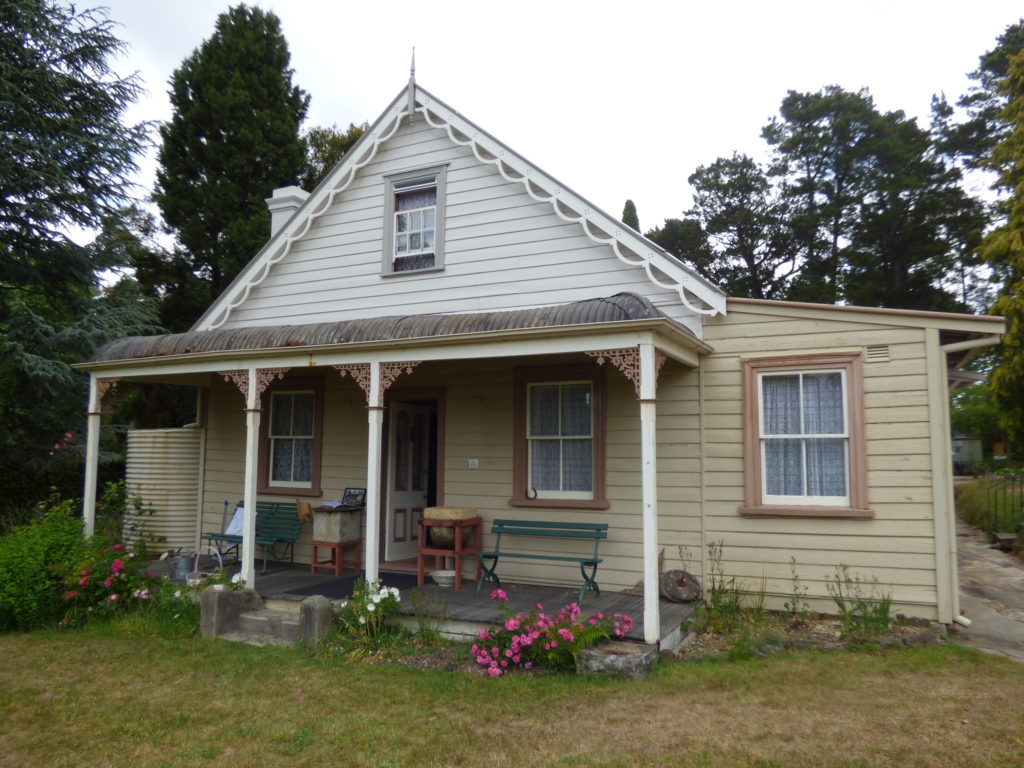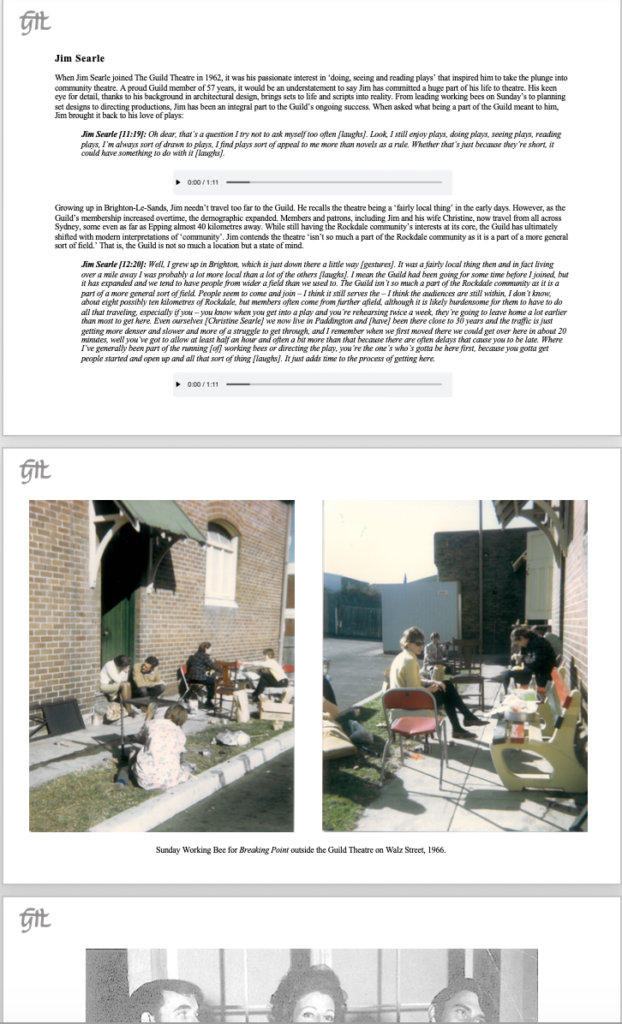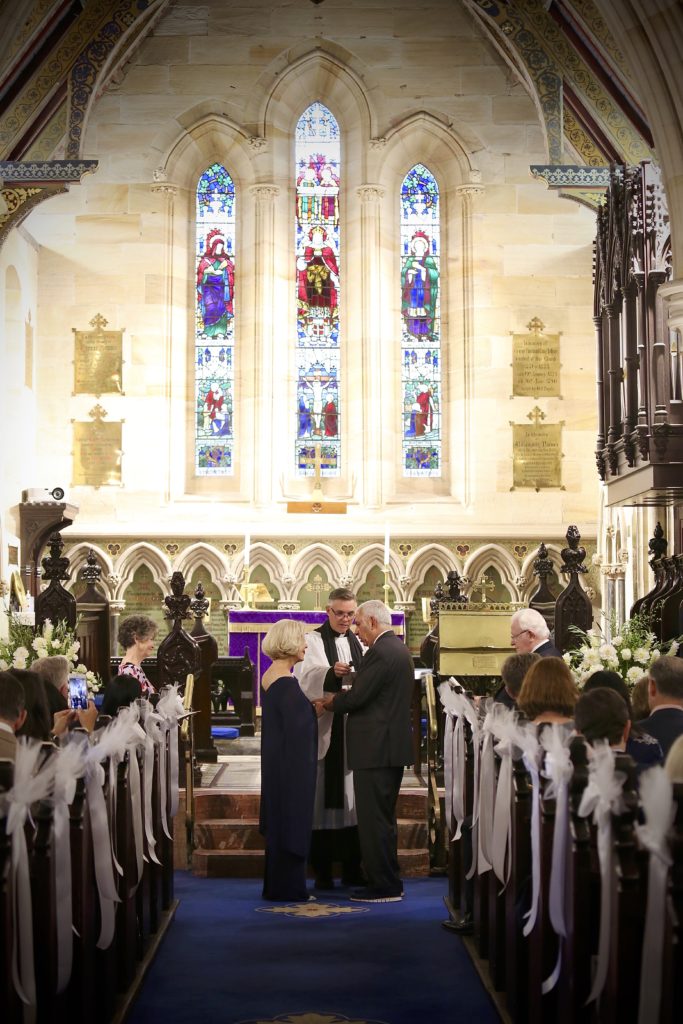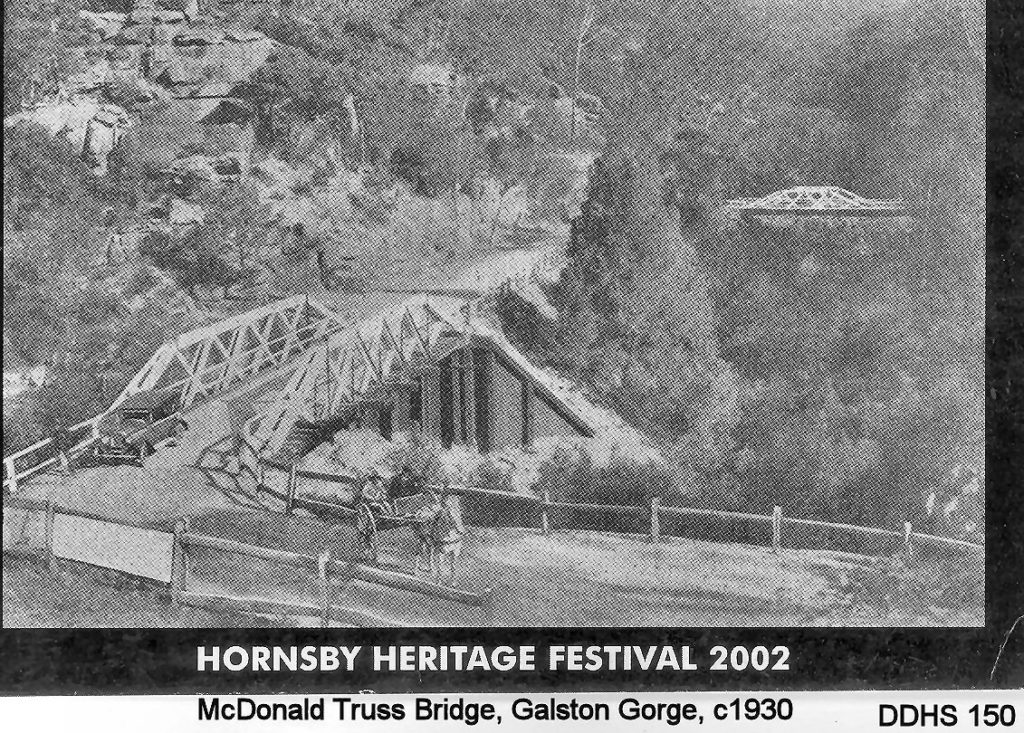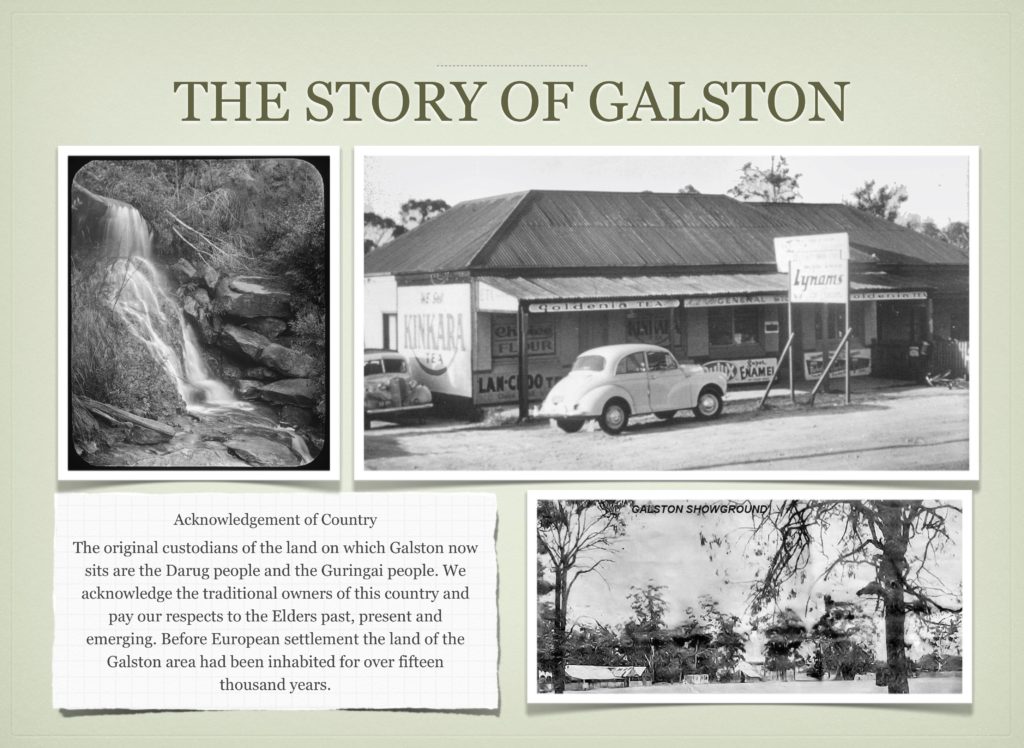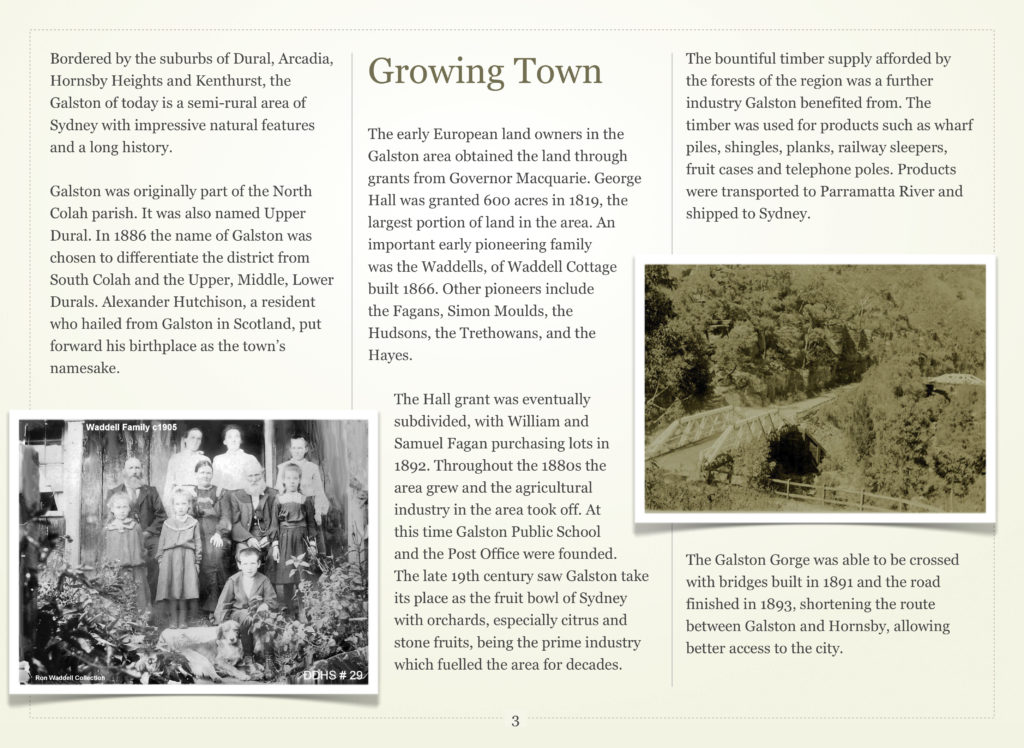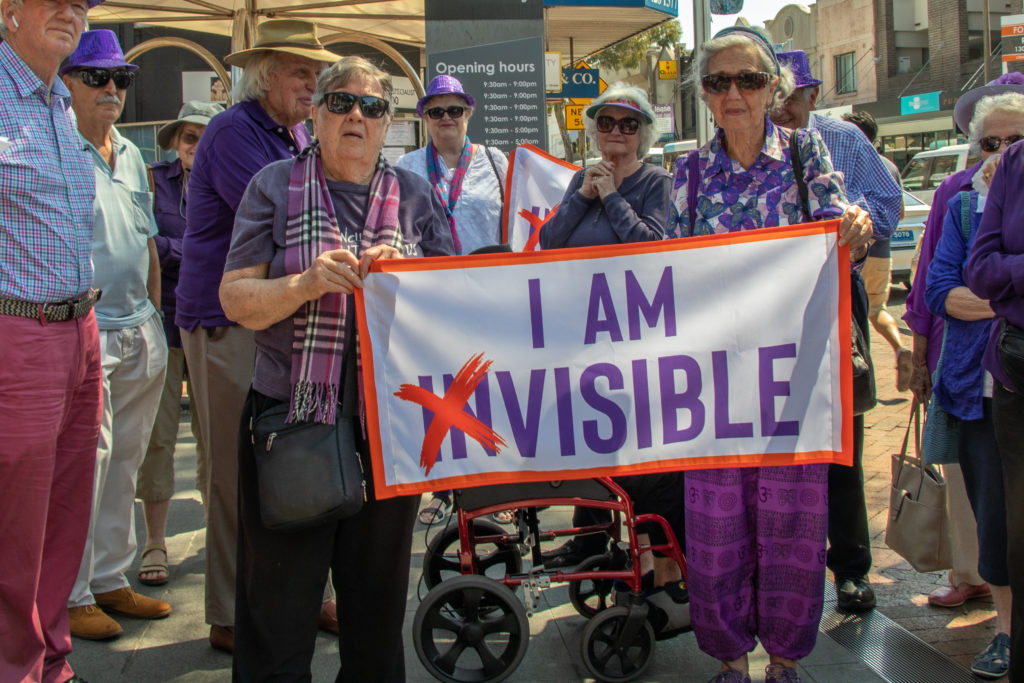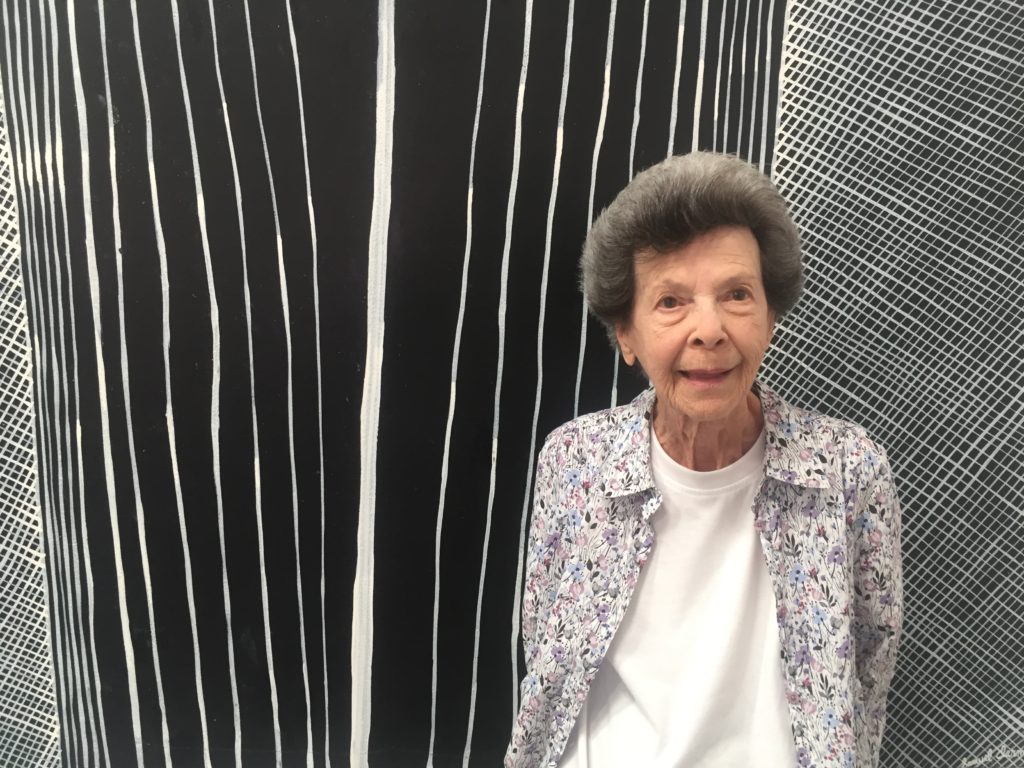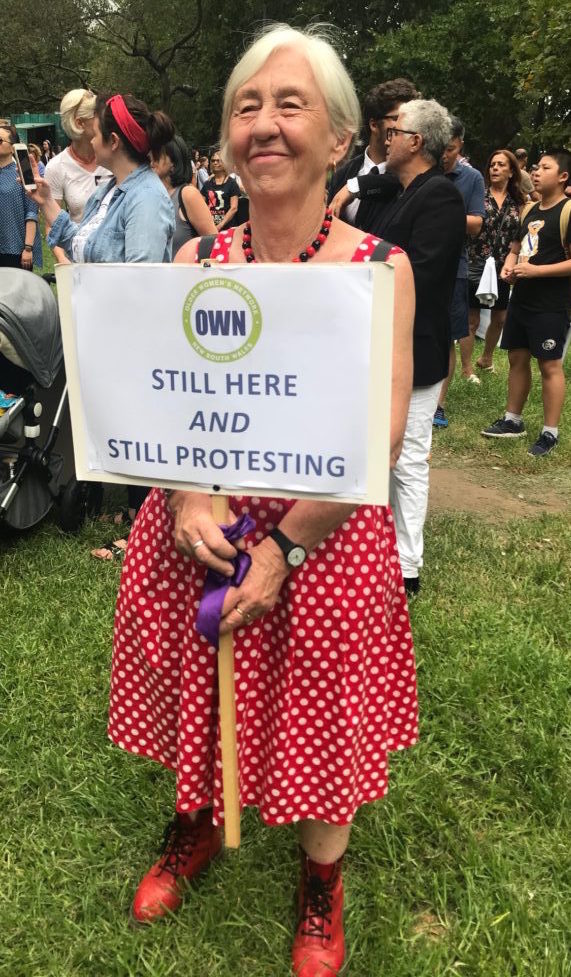I first came into contact with members of the Black Dog Institute when my residential college hosted charity events to raise funds for them. My project arose when I began to volunteer for the organization in their media and communications department where I was able to read their annual records. Black Dog had a history which dated back to 1985 and the organization had evolved significantly since then, revealing a clear need for this evolution to be illustrated. Realizing that nobody had ever compiled a comprehensive history of the organization, the head of media expressed an interest in my proposal.
During my weekly volunteer days I reflected on the questions we had asked ourselves in class: Who or what has commissioned product? Who is the audience? What are the challenges of using different approaches? What opportunities are possible when using different formats to present history that are not possible via books or articles? How does audience influence form and content? I found the answers to these questions revealed implicitly through my project. The timeline of the history of Black Dog would have the ability to shape shift into various forms depending on the audience. By manipulating the language I was able to sell the success of the organisation through what we called ‘hero phrases’. This referred to the marketing language used on the version of the timeline that would be presented to prospective donors. Additionally, this version would be used as a model for the interactive timeline which would appear on their website. This required the language to be simple and catchy to capture the attention of the teens who would frequent the Black Dog website. It also required me to filter out the information which would not have been exciting for readers. While the version of the timeline I created for archival purposes required significant detail such as exact names and dates from financial records and annual reports.
After a few weeks of reading through various different medical articles, annual reports, grant applications, the Black Dog website, news articles and publications I noticed that one thing remained consistent throughout the records. Since its establishment in 1995 the Black Dog Institute had remained true to its mission of bridging the gap between medical research into mental illness and the mental health community. Over the years the methods of achieving this would change from setting up clinics to developing apps, however the goal remained the same. The organisation remained determined to provide platforms for the prevention and treatment of symptoms of mental illness. I used this mission to drive my work and as I developed the timeline project I remembered the Black Dog’s overarching value. Although the projects about which I was writing mostly spoke for themselves, I made an effort to highlight the information which revealed the organisation’s attitude. This required the exclusion of a few of the organisation’s failed studies and a careful rewording of the information on those which had not yet flourished. This gave more life to the project and I hope that when the final timeline is read the Black Dog Institute’s mission clearly emerges.
The project itself will be used to further pursue the Black Dog Institute’s mission to connect the mental health community to medical research into treatments and prevention tools for mental illness. The model I have created for the website’s interactive timeline seeks to increase accessibility to information on mental health. The linear version will be presented in meetings, on the annual report and at fundraising events. In reflecting the organisation’s key milestones and achievements the timeline will encourage sponsors and donors to support their endeavours. In addition the timeline acts as evidence of the organisation’s success over the years and justifies their need for constant expansion. This encourages the National Health and Medical Research Council to approve grants which will enable future studies and trials to be completed. The findings of these studies lead to the development of new ways to treat and prevent symptoms of mental illness or to prevent suicide. Over the years the organisation has initiated innovative studies which have changed the way we think about mental illness in NSW. Their apps have been proven to decrease symptoms and their programs have been proven to prevent a significant number of suicides. By providing a tangible reflection of the ongoing success at the Black Dog Institute, the timeline project has assisted the organisation in its mission and hence benefitted the mental health community in general.
As I have mentioned the format of the final project includes a model for the website’s interactive timeline and a more detailed, linear account of the history of the Black Dog Institute. The website version will be passed on to the Web Designer who will put the content I have created onto the website. Based on the creative ideas I came up with as approved by the media and communications team, the web designer will also make the online timeline interactive. When hovering over the bubbles along the timeline, more information will appear which can then be clicked on taking the reader to the dedicated webpage for all information surrounding the topic within that bubble. This is simple yet effective as it encourages readers to explore the website further, where more information will be readily available. While these interactive measures may appear limited in creativity they are beneficial in optimising accessibility. By allowing an outsources Web Designer to put my model into the correct format I have ensured that the timeline will be fully compatible with the website and when updates are required in the future, this can be done smoothly. The linear version of the timeline is simply text in a document and can easily be uploaded in any format and updated in the future. In this way I have ensured that the project is sustainable beyond the work I have done for this unit.
While I have thoroughly enjoyed my time volunteering at Black Dog, I did encounter some minor obstacles in the development of my project. In trying to develop the creative aspect of the project I struggled to reconcile the organisations needs with my own ideas. For example, the organisation wished to keep the website format of the timeline fairly simple while I would have suggested creating more extensive interaction abilities. But I can see how, although it may be more limited, the simpler approach will be more effective in grabbing attention. However, overall my experience at Black Dog has been extremely valuable, eye opening and enjoyable. I have gained significant media and communications related skills and experience. I developed my writing skills, learning how to adjust my tone to best suit the audience. I gained useful archival experience which taught me how to extract relevant information from hordes of documents. Ultimately, this project has made me think about the active role history plays in different contexts and has taught me a lot about how to create and disseminate history in a manner that is both interesting and informative for the reader.

